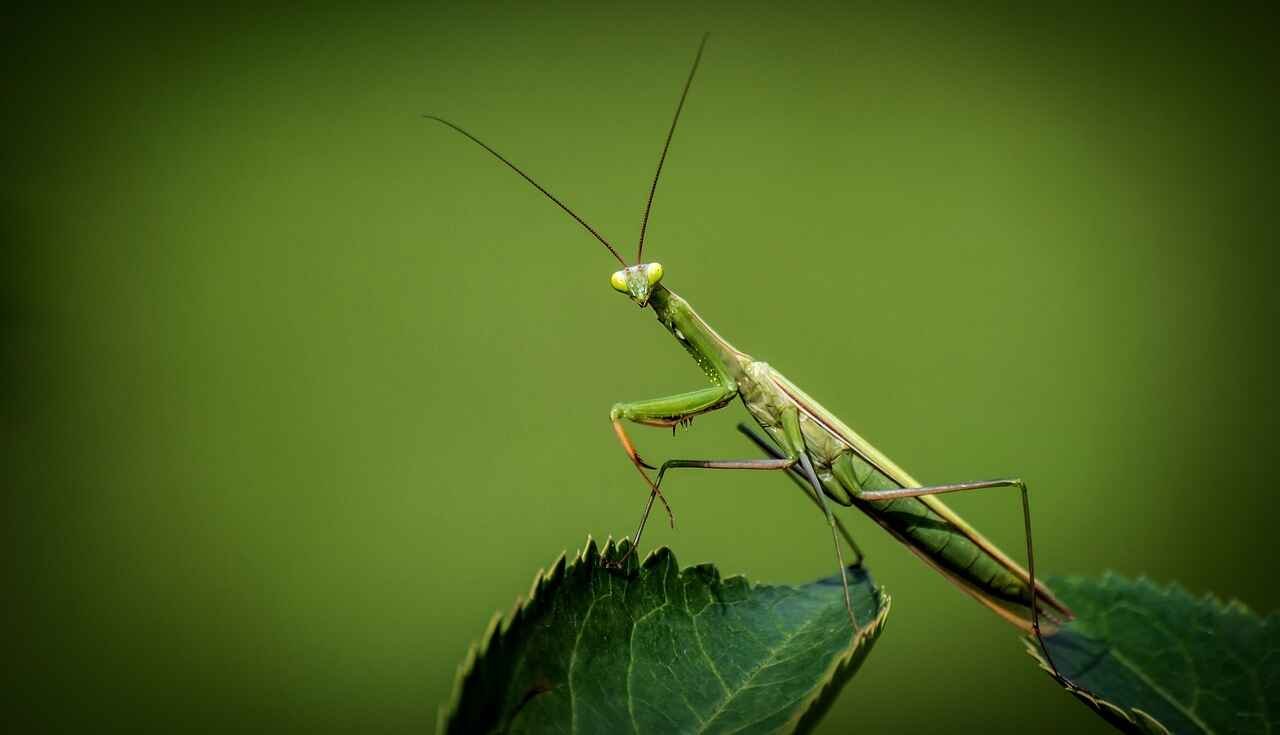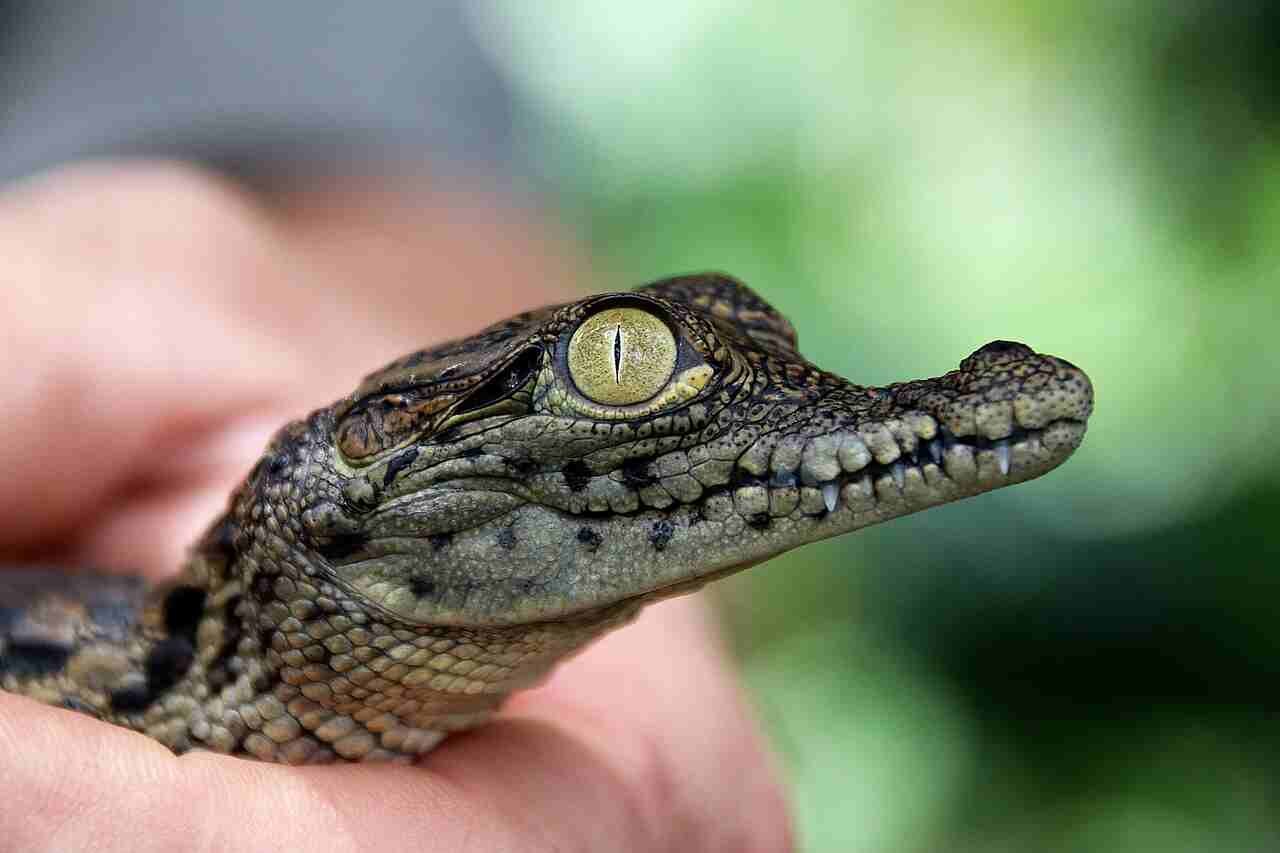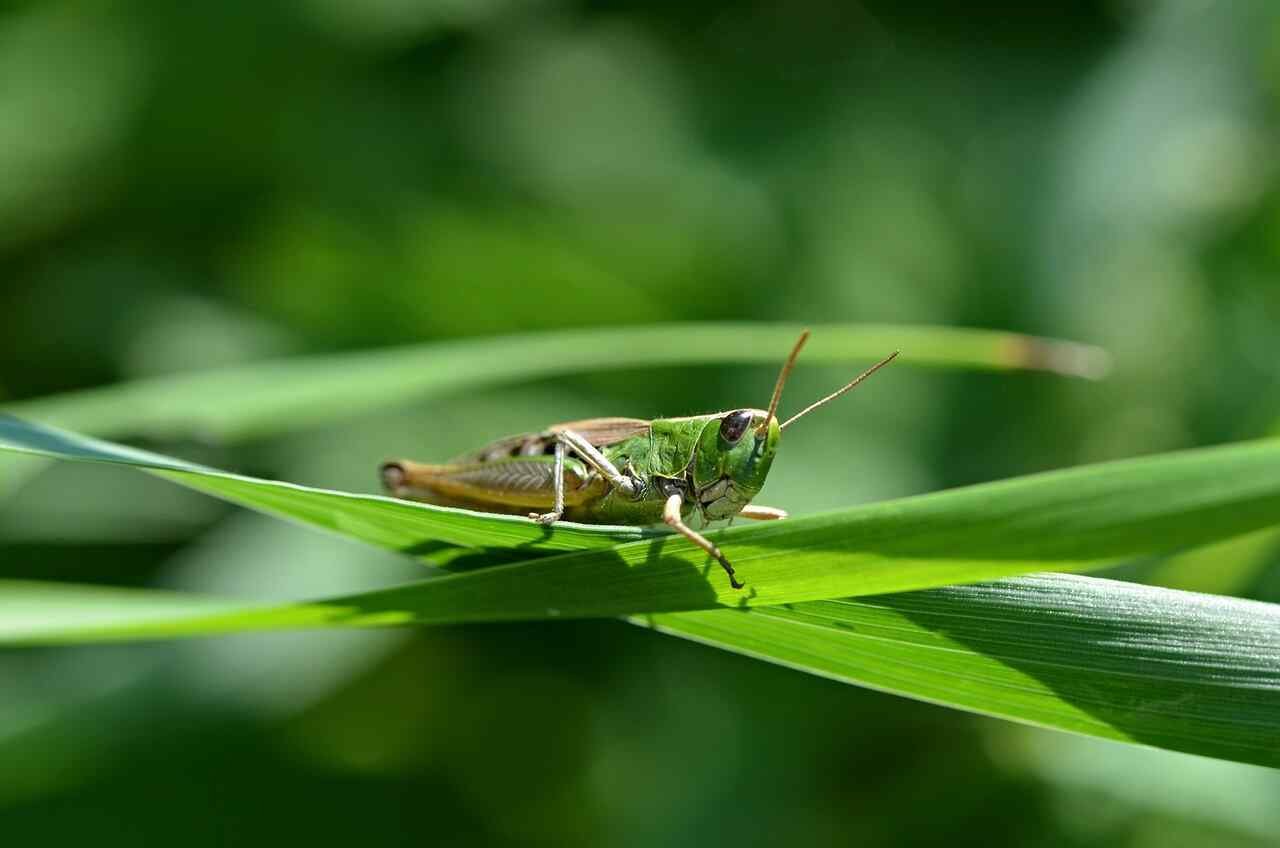Mantis are amazing insects that get our attention because of how they look and behave. They are famous for their praying pose, holding their front legs together like they are praying. But there is much more to these insects than just their appearance.
In this article, we will share 20 incredible things about mantises, including how they hunt, their surprising habits, and how they survive. Whether you love nature or are just curious, you will see why mantises are some of the most interesting insects in the world. Let’s take a closer look at these amazing creatures.
Different Types of Mantis Around the World
There are more than 2,000 different types of mantises all over the world! This makes them a very diverse group of insects. Some of the most well-known types are:
Praying Mantis
This is the most well-known type of mantis. It gets its name from how it holds its front legs in a “praying” position. People can easily spot it because of its unique shape and posture.
Dead Leaf Mantis
This mantis is really good at hiding because it looks just like a dried leaf. Its body blends perfectly with fallen leaves, helping it stay safe from animals that want to eat it.
Giant Devil’s Flower Mantis
Known for its large size and beautiful colors, this mantis looks like a flower. It tricks other animals into thinking it’s a flower, which helps it catch food and avoid danger.
Orchid Mantis
The orchid mantis is colorful and resembles an orchid flower. Its special look helps it hide in plants and flowers while hunting for its next meal.
Praying Mantis: The Famous Hunter
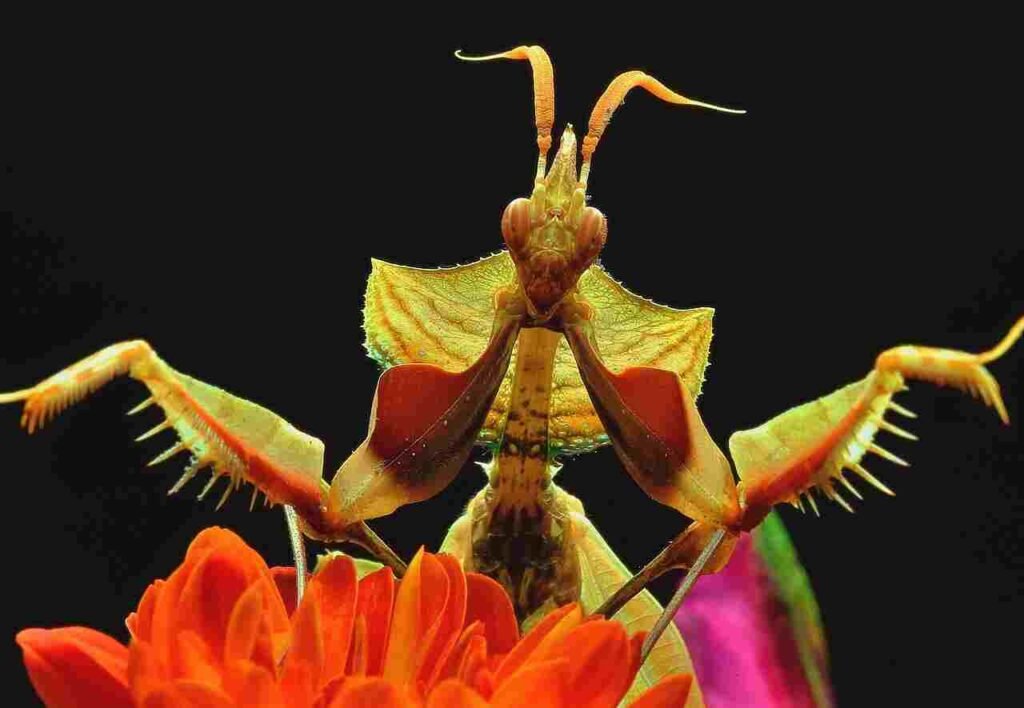
The praying mantis is probably the most well-known type of mantis. It gets its name because it holds its front legs in a praying position like it’s praying. But the praying mantis is not praying—it is ready to hunt.
These insects are excellent hunters. They are called predators, which means they hunt and eat other animals. Their favorite food is smaller insects like flies, moths, and crickets.
The praying mantis has special front legs that are sharp and spiked. These legs are perfect for grabbing and holding onto its prey. When a smaller insect comes near, the praying mantis quickly reaches out with its legs and catches the animal. Once it has caught its prey, the mantis eats it!
Praying Mantises are very patient hunters. They often stay very still, waiting for the right moment to grab their food. They are quick and smart, making them one of the best hunters in the insect world.
Mantis Behavior: How They Hunt and Live
Mantis are carnivores, which means they eat other animals, mostly insects. They spend a lot of time looking for food, and their hunting methods are very interesting.
Ambush Predators
Mantis are ambush predators. Instead of chasing their food, they stay very still and wait for prey to come near. They blend in with plants or leaves, so other animals don’t see them. When a bug gets close, the mantis quickly grabs it with its sharp front legs.
Amazing Head Movement
One special thing about mantises is that they can turn their heads almost 180 degrees. This means they can look all around them, even behind them. It helps them spot food or any danger that might be nearby.
Patience and Focus
Mantis are also very patient hunters. They can stay still for a long time, waiting for the perfect moment to catch something. This stillness helps them stay hidden and makes it easier to grab their next meal.
Overall, mantises are fascinating creatures because of their smart hunting skills and their ability to blend into their environment.
Mantis Habitat: Where Do They Live?
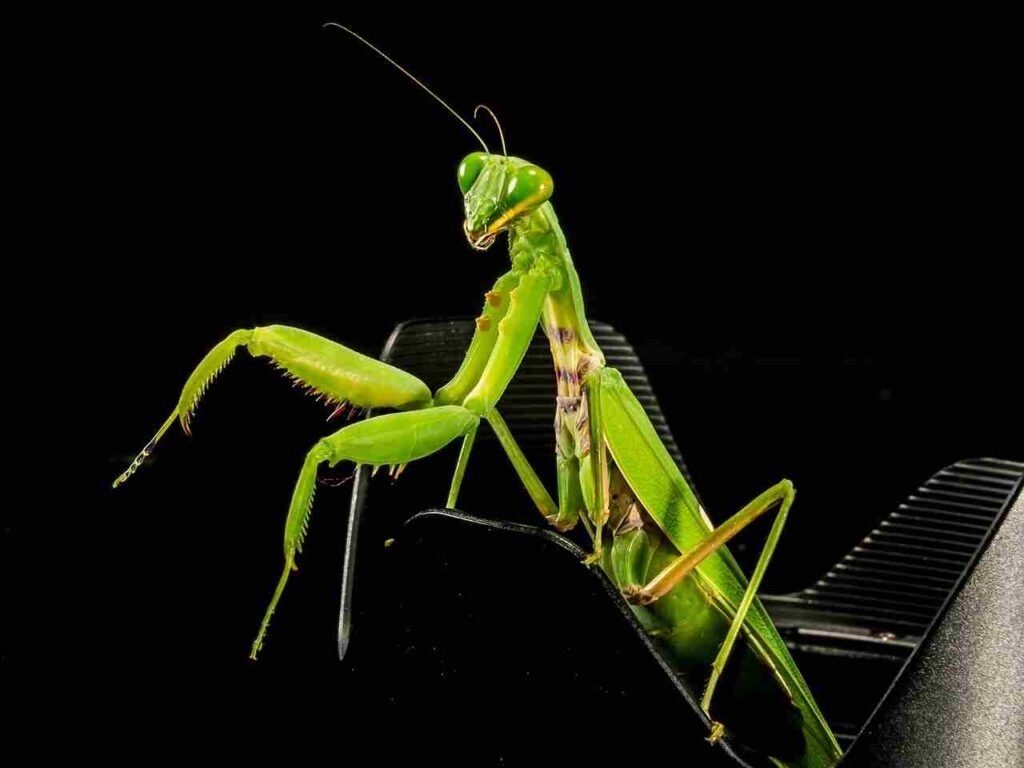
Mantis are found in many different places around the world. They like warm areas, and each species has its favorite type of environment. Here is where you can find them:
Forests and Gardens
Many mantis species live in forests and gardens. These areas are full of plants and trees, which give mantis lots of places to hide and hunt for food. The green leaves and branches help them blend in and stay safe from other animals.
Meadows and Grasslands
Mantis can also be found in meadows and grasslands. These open spaces have plenty of tall plants and flowers, which are perfect for mantis to hide in while waiting for their prey.
Deserts
Some species of mantis live in deserts, where the weather is dry and hot. They are well adapted to survive in these harsh conditions by hiding in the shade and staying very still to avoid the heat.
Tropical Regions
Certain mantis species prefer tropical regions, like parts of Southeast Asia and Africa. In these warm, humid areas, mantis find plenty of food and safe places to live among the dense plants.
Mantis live in many different habitats, but they all prefer places with lots of plants to help them hide and hunt. They are skilled at blending into their surroundings to stay safe and find food.
Mantis Diet: What Do They Eat?
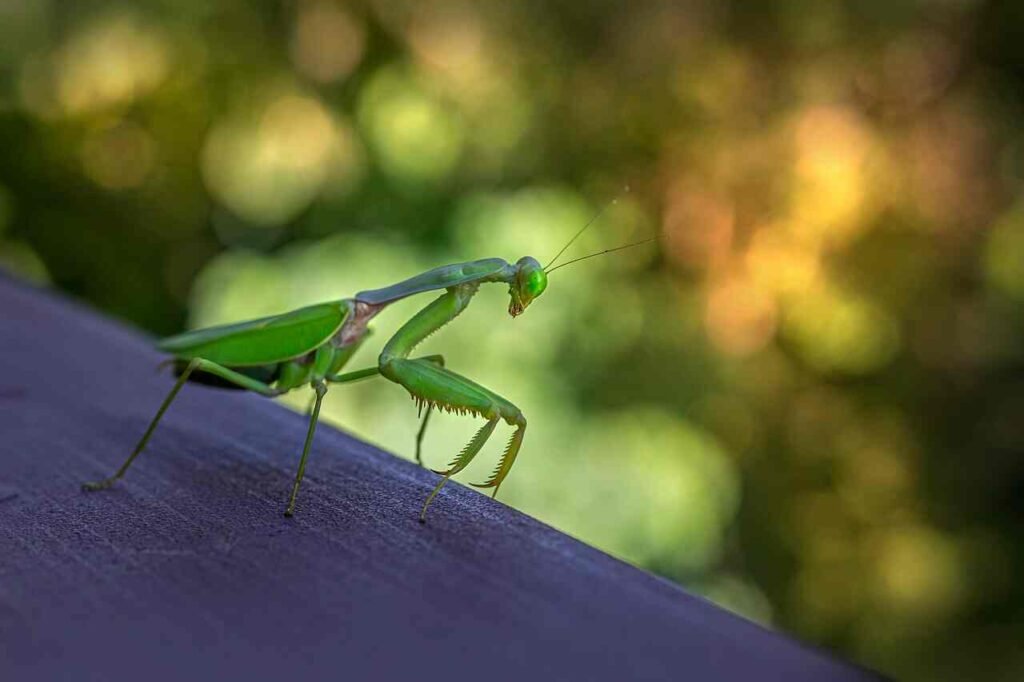
Mantis are carnivores, which means they only eat other animals, mostly insects. Here’s a closer look at what they eat and how they hunt:
Favorite Foods
Mantis eat a variety of insects, including:
Flies
Grasshoppers
Crickets
Moths
Beetles
These insects make up the main part of a mantis’s diet. Mantis are skilled hunters and are always looking for their next meal.
How mantis Catch Their Food
Mantis use their sharp forelegs to grab and hold onto their prey. These legs have spikes that help the mantis catch and keep its food in place while it eats. When an insect comes close, the mantis quickly reaches out and grabs it, making it very hard for the prey to escape.
Bigger Mantis and Bigger Meals
Some larger mantis species are strong enough to catch bigger animals. They can even capture small lizards or birds. While this doesn’t happen all the time, it shows how powerful and skilled mantis can be when hunting.
No Plants for Mantis
Unlike some other insects, mantises do not eat plants. They only eat meat, mostly other insects, making them true predators in the insect world.
Mantis are amazing hunters, and their sharp legs, patience, and quick movements help them catch their food and stay alive.
Mantis Lifecycle: How Do They Grow?
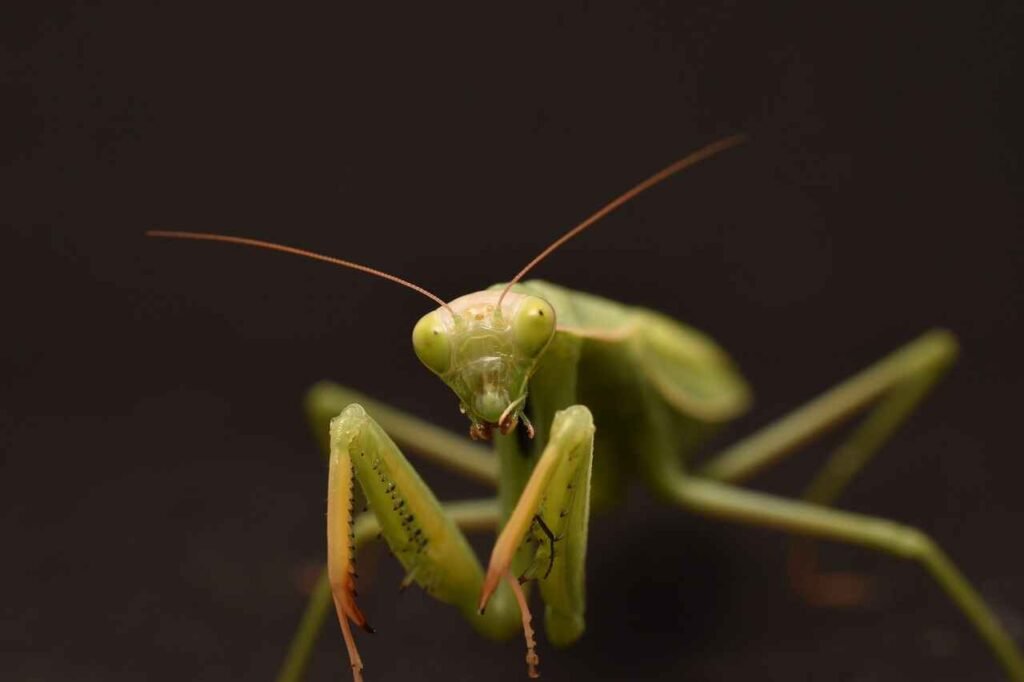
Mantis go through a process called incomplete metamorphosis. This means they don’t have a pupal stage like butterflies. Instead, they grow in three main stages: egg, nymph, and adult
Egg: The Beginning of Life
A female mantis starts the lifecycle by laying her eggs in a special protective case called an ootheca. The ootheca keeps the eggs safe from predators and the weather. It looks like a small, foam-like block and can hold many eggs inside. The eggs stay in the case until they hatch.
Nymph: Baby Mantis
Once the eggs hatch, the babies, called nymphs, come out. Nymphs look like tiny adult mantises but are much smaller and do not have fully developed wings. They are already hunters and will start looking for small insects to eat. As they grow, they shed their skin several times, getting bigger and more like adult mantises each time. This process is called molting.
Adult: Fully Grown Mantis
After going through several molts, the nymphs finally become adult mantises. At this stage, they are fully grown, have wings, and are ready to start hunting and looking for a mate. Adults can now reproduce, continuing the lifecycle.
Mantis grow interestingly, changing through these three stages. They do not undergo a full transformation like butterflies, but their growth is still amazing to watch.
Mantis Care: Keeping Mantis as Pets
Mantis can make amazing pets for people who love insects. They are fairly easy to care for and do not need a lot of attention. Here is how you can keep a mantis happy and healthy in your home:
Setting Up the Habitat
To keep a mantis, you need to provide a good place for it to live. A simple tank or container works well. You can add plants or sticks inside so the mantis has something to climb on. This helps them feel comfortable and gives them places to hide, just like in nature. The habitat should also have some air holes so the mantises can breathe.
Temperature and Environment
Mantis like warm environments. Keep the temperature in their tank between 70-85°F (21-29°C). If it’s too cold, they might not be active or healthy. If you live in a cooler area, you may need to use a small heat source, like a lamp or heat mat, to keep them warm.
Feeding Your Mantis
Mantis eat live insects, so you will need to feed them things like flies, crickets, or moths. They are hunters, so it’s important to give them food that they can catch and eat. You should feed your mantis once or twice a week, depending on its size and age. Make sure the food is not too big, or the mantis might have trouble catching it.
Cleaning the Habitat
Mantis does not make a lot of messes, but you should still clean their enclosure regularly. Remove any leftover food or waste to keep the tank clean and healthy. You can clean the tank once a week or as needed.
Low Maintenance
Mantis are low-maintenance pets. They don’t need much attention, and they mostly take care of themselves. As long as you provide the right environment and food, they will be happy and healthy.
Keeping a mantis as a pet is a fun and simple way to enjoy the beauty of nature in your own home. Just remember to give them a warm, clean place to live and feed them the right insects.
Mantis Anatomy: What Do They Look Like?
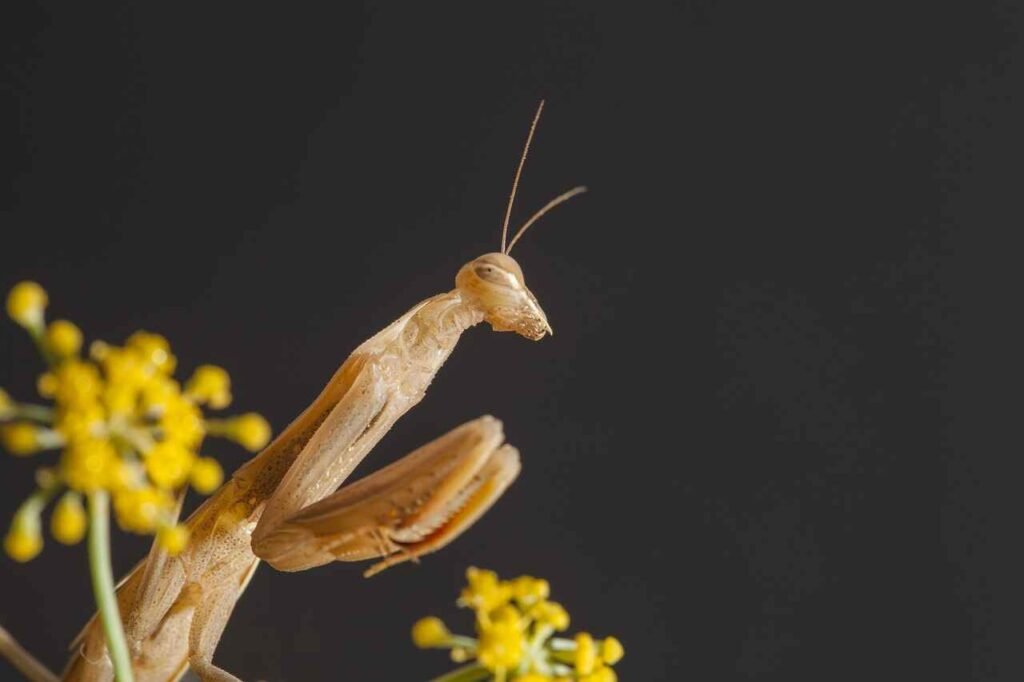
Mantis have some very cool and unique features that make them stand out. Let’s take a closer look at how they look and how their body helps them survive.
Long, Thin Body
Mantis have a long and thin body that helps them hide in plants and leaves. Their shape makes it easy for them to blend in with their surroundings, so they can stay safe from predators and wait quietly to catch their food.
Triangular Head
One interesting thing about a mantis is its large, triangle-shaped head. The flat shape of their head helps them see very well and find food. They can even turn their head almost 180 degrees, which lets them look around without moving their body.
Sharp Front Legs
Mantis have long, sharp front legs that they use to catch and hold onto their food. These legs have spikes that help them grab and keep their prey still. The mantis uses these legs to quickly reach out and catch food when it gets close.
Large Eyes
Mantis has big eyes made up of many small parts. These eyes help them see a lot around them. What makes their eyes special is that they can move independently, which means they can look in different directions at the same time. This helps them spot food and dangers from all sides.
Wings for Flying
Mantis also have wings that allow them to fly, but they don’t fly much. They prefer to stay on the ground or plants. When they aren’t flying, their wings are folded over their bodies, looking like part of the leaves or branches where they sit.
Mantis have a unique body that helps them survive in the wild. From their sharp legs to their big eyes, every part of their body helps them stay safe and catch food.
Mantis Predators: Who Hunts Mantis?
Even though mantis are great hunters, they also face some threats from other animals. Let’s look at who hunts mantis and how mantis protect themselves.
Birds
One of the main predators of mantis are birds, especially larger birds like crows. Birds have sharp beaks and can easily catch a mantis if they spot it. Since mantis usually stay still, they can sometimes become easy targets for hungry birds.
Larger Insects
Some larger insects, like bigger mantis or praying mantis, may hunt smaller mantis. These insects are also carnivores and will eat other smaller mantis if they get the chance. Even though mantis are skilled hunters, sometimes they fall prey to other insects.
Frogs and Lizards
Frogs and lizards are also known to eat smaller mantis. These animals can catch mantis quickly with their fast movements and long tongues. Small mantis are at more risk from frogs and lizards because they are easier to catch.
How Mantis Protect Themselves
Mantis are very good at blending in with their surroundings, which helps them stay hidden from predators. Their camouflage allows them to look like leaves or twigs, making it hard for animals to see them. In addition to hiding, mantis also have quick reflexes and can move fast if they need to escape danger.
Mantis may have some natural enemies, but they have many ways to stay safe. Their camouflage and quick movements help them avoid being eaten by birds, larger insects, or frogs and lizards. Their hunting skills also help them survive in the wild, keeping them at the top of the food chain.
Mantis Reproduction: How Do Mantis Mate?
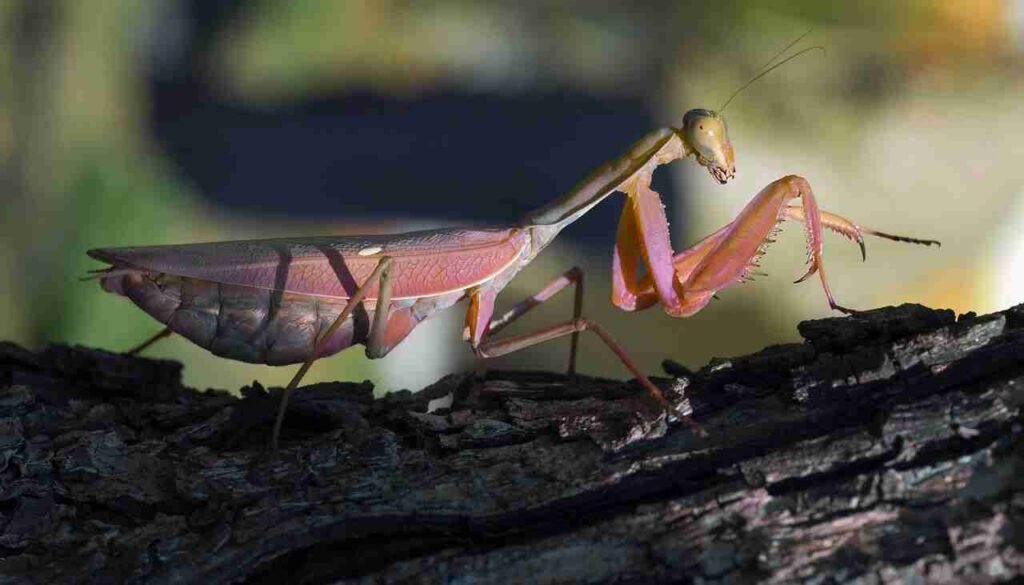
Mantis has an interesting way of having babies. Let’s look at how they mate and reproduce.
Finding a Mate
When it’s time to find a mate, the male mantis looks for a female. He moves slowly and carefully because female mantis sometimes eat the male after mating. To avoid this, the male tries to approach the female gently and only when it is safe.
Mating
Once the male gets close to the female, they begin mating. The male climbs onto the female’s back, and they connect their bodies. The mating process can last for about 20 minutes to an hour. During this time, the female stays still while the male does his part.
physical Cannibalism
After mating, sometimes the female eats the male. This is called physical cannibalism. While it might seem scary, it doesn’t happen every time. Sometimes the male escapes safely, but other times the female eats him. Eating the male gives her extra energy to help produce eggs.
Laying Eggs
After mating, the female mantis lays her eggs. She creates a hard, foam-like case called an ootheca to protect the eggs. The ootheca keeps the eggs safe from the weather and any animals that might want to eat them. A female will lay several oothecas, each with many eggs inside.
Hatching
The eggs stay in the ootheca until they hatch. Depending on the temperature, it can take weeks or months for the eggs to hatch. When the nymphs (baby mantis) hatch, they are very small and look like adult mantis, but they don’t have wings yet. The nymphs will grow bigger and shed their skin until they become full-grown mantis.
Mantis has a special way of reproducing. The male and female mate carefully, sometimes with the male risking his life. After mating, the female lays eggs in a safe case, and the babies hatch later. This cycle helps mantis reproduce and keep their species alive.
How Mantis Use Camouflage to Hide and Hunt
Camouflage Helps Them Stay Safe
Mantis are very good at hiding from predators. Many types of mantis have features that help them look like the plants around them. For example, some mantis look like leaves or branches, making it hard for other animals to see them. This camouflage acts like a shield, helping the mantis stay hidden.
Mantis That Look Like Leaves
Some species, like the Dead Leaf Mantis, look just like dried leaves. This helps them become almost invisible when they sit on the forest floor. By blending in with leaves, they can avoid being spotted by birds or other animals that might want to eat them.
Mantis That Look Like Flowers
Other mantis, like the Orchid Mantis, resemble beautiful flowers. The colors and shapes of their bodies help them blend in with real flowers in nature. This not only helps them avoid being eaten but also helps them hunt. When other insects come close to the flowers, the Orchid Mantis quickly grabs them with its sharp front legs.
Camouflage for Hunting
Mantis use their camouflage not just for hiding but also for hunting. By blending in with their environment, they can wait quietly for prey to come near. When an insect gets too close, the mantis quickly catches it using its sharp front legs.
Different Camouflage for Each Species
Each species of mantis has its own special way of blending in. Some look like sticks, some like leaves, and others look like flowers. Their camouflage helps them survive in different environments.
Mantis have amazing camouflage that helps them both hide from predators and catch their food. Whether they look like leaves, sticks, or flowers, their ability to blend in makes them one of the most skilled hunters in nature.
Mantis Wings: The Power of Flight
Mantis are mostly found on the ground, but many have wings that give them the ability to fly. Let’s explore how mantis use their wings and the benefits they bring.
Mantis Wings: Long and Narrow
Mantis wings are long and narrow, and they fold up neatly when they’re not in use. This helps them stay protected and hidden when they are resting. The wings are light but strong enough to help them fly short distances.
Flying to Escape Danger
Although mantis don’t fly often, they use their wings to escape danger. If a predator, like a bird, gets too close, the mantis can take off into the air to avoid being eaten. Their wings help them quickly fly away from danger and find a safe place to land.
Flying for Mating Displays
Mantis also use their wings during the mating process. Some species, like the Orchid Mantis, will spread their wings to show off to a potential mate. This display can make them appear larger and more attractive, helping them find a mate.
Short Flights to Move Around
Mantis usually don’t fly for long distances. They typically use their wings to make short flights to move from one spot to another. This could be to find a new plant to sit on or to escape a threat.
Not All Mantis Can Fly
Not all mantis have wings, and some that do may not use them very often. Some species of mantis are wingless and stay on the ground. Even the mantis with wings prefer to stay still, blending in with their environment.
Mantis have wings that allow them to fly, but they don not rely on flight all the time. They use their wings mainly for escaping danger, moving short distances, and attracting mates. The wings help them survive in the wild and add another layer of skill to their hunting and protection methods.
Mantis Size: How Big Are Mantis?
Mantis comes in many different sizes, depending on the species. Some are very small, while others can grow quite large. Let’s learn more about the size of mantis and how it affects them.
Small Mantis Species
Some species of mantis are very small. For example, the Little Green Mantis is only about 2 inches long. Even though they are small, these mantis are still very skilled hunters and use their sharp legs to catch food, just like larger species.
Large Mantis Species
Other mantis species can grow much bigger. The Giant Devil’s Flower Mantis can grow up to 6 inches long, which is much larger than many other types. Bigger mantis have more powerful legs and can catch larger prey, but they also face more challenges in hiding from predators because of their size.
Speed and Efficiency
No matter their size, mantis are fast and efficient hunters. Their sharp front legs help them grab food quickly, and they use their camouflage to hide from predators. Whether small or large, mantis have great hunting skills that help them survive in the wild.
Size Doesn’t Affect Hunting Ability
Even though some mantis are bigger or smaller, size doesn’t change their hunting ability. A small mantis can catch a fly just as well as a large one can catch a cricket. Their skills in ambushing prey and using their legs to grab food are what makes them such excellent hunters, no matter how big they are.
Mantis can be small or large, with some species only a couple of inches long and others growing up to 6 inches. Regardless of their size, all mantis are skilled and fast hunters, using their legs and camouflage to catch food and stay safe.
Praying Mantis Facts: Interesting Things You Didn’t Know
Mantis are amazing insects with many unique features. Here are some fun and surprising facts about them:
Mantis Can Rotate Their Heads 180 Degrees
One of the coolest things about mantises is their ability to rotate their heads almost 180 degrees. This means they can turn their heads to look around without moving their bodies. This helps them spot prey or danger from any direction, making them excellent hunters and keeping them safe from predators.
Amazing Hunting Skills
Mantis are great hunters. They can catch insects in just a split second! Using their sharp front legs, they can grab and hold onto prey so quickly that the insect hardly has time to escape. Their speed and accuracy make them very skilled at hunting.
Some Mantis Can Change Color
Did you know that some species of mantis can change color? This helps them blend into their environment even better. For example, the orchid mantis can look like a flower, and the dead leaf mantis can look like a dried leaf. This camouflage keeps them safe from predators and helps them catch prey.
Mantises Are Very Good at Hiding
Mantis have incredible camouflage skills, making them nearly invisible to predators. Many species can hide by looking like parts of plants, such as leaves, branches, or flowers. This helps them avoid being eaten and also makes it easier for them to catch insects by surprise.
Mantises Have Special Front Legs
Mantis’ front legs are long and spiked, which helps them grab onto prey and hold it tightly. These legs act like traps, allowing them to catch their food quickly and with great precision.
Mantis are fascinating creatures with many special abilities. From rotating their heads to changing color, these insects are built for hunting and survival. They are not only great predators, but they also have amazing features that make them unique in the insect world.
Mantis in Movies and Stories: How Mantis Are Seen in Popular Culture
Mantis are interesting creatures that often appear in movies, TV shows, and books. In these stories, they are usually shown as mysterious and wise insects. Let’s see how mantises are represented in popular culture.
Mantis in Kung Fu Panda
In the popular movie Kung Fu Panda, there is a character named Mantis who is part of the Furious Five. This Mantis is small but very fast and strong, just like a real mantis. The movie shows how mantises are known for being quick and powerful, with amazing skills that help them win battles. Mantis in the movie is smart, quick on his feet, and always ready for action.
Mantis in Other Movies and TV Shows
Mantis also appears in many other movies and TV shows. In these shows, mantis are often shown as having special powers or abilities. They are usually portrayed as mysterious, wise, and strong creatures. Sometimes they even have supernatural qualities, making them interesting characters in the story.
Mantis in Books
In books, mantises are often shown as symbols of strength and wisdom. They are admired for their patience and focus, especially because they wait quietly and patiently for their prey. Their careful and strategic way of hunting is used to teach lessons in many stories.
Mantis Represents Patience and Focus
In many cultures and stories, mantises represent patience and focus. A mantis waits for the right moment to act, which is a quality that people admire. In stories, this patience is used to show how important it is to think carefully and act at the right time, instead of rushing into things.
Mantis in Video Games
Mantis are also seen in video games. They are sometimes enemies or characters with special skills. Mantis are often quick and strong, which makes them great characters in games. In some games, they might even have special powers or abilities, just like the real mantis uses its speed and strength to hunt.
Mantis are amazing creatures that are admired for their quickness, strength, and patience. They appear in many movies, shows, books, and games as symbols of power and wisdom. Whether in Kung Fu Panda, a story, or a game, mantises are always shown as clever and powerful insects that people find fascinating.
Conclusion
Mantis are amazing insects that are fun to learn about and very important in nature. Whether you’re amazed by how they hunt, their ability to hide in plain sight, or how they look, mantis are truly special. With so many different types and interesting behaviors, they will continue to amaze and inspire people for a long time.

